Sale
The Dictionary of Classical Hebrew, Volumes 1-9 Hardback
Published: Jun 2016
£45.00 – £65.00
The Dictionary of Classical Hebrew is a completely new and innovative dictionary.
Unlike previous dictionaries, which have been dictionaries of biblical Hebrew, this is the first dictionary of the classical Hebrew language to include the Bible, Dead Sea Scrolls, and all the other known Hebrew inscriptions and manuscripts.
This Dictionary covers the period from the earliest times to 200 CE. It lists and analyses every occurrences of each Hebrew word that occurs in texts of that period, with an English translation of every Hebrew word and phrase cited.
Among its special features are: a list of the non-biblical texts cited (especially the Dead Sea Scrolls), a word frequency index for each letter of the alphabet, a substantial bibliography (from Volume 2 onward) and an English-Hebrew index in each volume.
Sale
The Dictionary of Classical Hebrew, Volumes 1-9 Hardback
£45.00 – £65.00
The Dictionary of Classical Hebrew is a completely new and innovative dictionary.
Unlike previous dictionaries, which have been dictionaries of biblical Hebrew, this is the first dictionary of the classical Hebrew language to include the Bible, Dead Sea Scrolls, and all the other known Hebrew inscriptions and manuscripts.
This Dictionary covers the period from the earliest times to 200 CE. It lists and analyses every occurrences of each Hebrew word that occurs in texts of that period, with an English translation of every Hebrew word and phrase cited.
Among its special features are: a list of the non-biblical texts cited (especially the Dead Sea Scrolls), a word frequency index for each letter of the alphabet, a substantial bibliography (from Volume 2 onward) and an English-Hebrew index in each volume.
Sale
The Letter to the Romans: A Linguistic and Literary Commentary
Published: Oct 2015
£16.50 – £20.00
This substantial new commentary, expounding the letter paragraph by paragraph, is distinctive among commentaries on Romans in foregrounding a linguistic and literary approach. To comprehend the letter, Porter shows, we must always be aware of the letter-writing and linguistically based rhetorical conventions its author was deploying.
The commentary is organized around the five-part epistolary structure that Paul developed for this fundamental letter, a structure that gives shape to its logically unfolding theological argument. Recognizing this structure is vital for interpreting the traditional sections of the body of the letter, as well as for understanding the placement of the problematic chapters 9 —11 within Paul's thought.
One of the primary means of development Paul uses within the letter is dialogical interaction —what the ancients called diatribe —as a linguistic device for shaping and presenting his argument. Through the insistent questions and responses of the interaction, Paul opens up the major theological issues of the letter —human depravity, sin and works, justification and righteousness, reconciliation, life in the Spirit, and the role of Israel —and shapes the way his addressees should respond to them.
Sale
The Letter to the Romans: A Linguistic and Literary Commentary
£16.50 – £20.00
This substantial new commentary, expounding the letter paragraph by paragraph, is distinctive among commentaries on Romans in foregrounding a linguistic and literary approach. To comprehend the letter, Porter shows, we must always be aware of the letter-writing and linguistically based rhetorical conventions its author was deploying.
The commentary is organized around the five-part epistolary structure that Paul developed for this fundamental letter, a structure that gives shape to its logically unfolding theological argument. Recognizing this structure is vital for interpreting the traditional sections of the body of the letter, as well as for understanding the placement of the problematic chapters 9 —11 within Paul's thought.
One of the primary means of development Paul uses within the letter is dialogical interaction —what the ancients called diatribe —as a linguistic device for shaping and presenting his argument. Through the insistent questions and responses of the interaction, Paul opens up the major theological issues of the letter —human depravity, sin and works, justification and righteousness, reconciliation, life in the Spirit, and the role of Israel —and shapes the way his addressees should respond to them.
Sale
The Pausal System: Divisions in the Hebrew Biblical Text as Marked by Voweling and Stress Position. Edited by Raymond de Hoop and Paul Sanders
Published: Oct 2015
Original price was: £45.00.£19.50Current price is: £19.50.
In the Hebrew Bible, the 'pausal system' is a set of variations in voweling and stress position that marks the ends of units of various sizes. Pausal forms are already well known and have long been included in grammatical works.
However, it is rarely noticed that many pausal forms occur at unexpected positions. They may be marked with any disjunctive accent, or even with one of the conjunctive accents. The pausal forms represent an earlier division of the text and deserve special attention.
In addition to the pausal forms, the retraction of word stress (nesigah) and the use of the vowel qames on conjunctive waw also appear to mark the ends of units. All these indicators are included in this comprehensive study of the pausal system and in the accompanying list of terminal markers. The volume contains the first classified list of all the relevant forms in the Hebrew Bible.
Sale
The Pausal System: Divisions in the Hebrew Biblical Text as Marked by Voweling and Stress Position. Edited by Raymond de Hoop and Paul Sanders
Original price was: £45.00.£19.50Current price is: £19.50.
In the Hebrew Bible, the 'pausal system' is a set of variations in voweling and stress position that marks the ends of units of various sizes. Pausal forms are already well known and have long been included in grammatical works.
However, it is rarely noticed that many pausal forms occur at unexpected positions. They may be marked with any disjunctive accent, or even with one of the conjunctive accents. The pausal forms represent an earlier division of the text and deserve special attention.
In addition to the pausal forms, the retraction of word stress (nesigah) and the use of the vowel qames on conjunctive waw also appear to mark the ends of units. All these indicators are included in this comprehensive study of the pausal system and in the accompanying list of terminal markers. The volume contains the first classified list of all the relevant forms in the Hebrew Bible.
Sale
Discourse, Dialogue, and Debate in the Bible: Essays in Honour of Frank H. Polak
Published: Aug 2014
Original price was: £70.00.£25.00Current price is: £25.00.
Frank H. Polak's contributions to Biblical Studies cover many fields, from Septuagint and Qumran studies to many other disciplines. His most important contributions in recent decades, however, have been to the narrative criticism and discourse analysis of the Bible, including their application to issues of date and authorship, which have been debated since ancient times.
Polak's work is informed by many branches of general and Semitic linguistics, social anthropology and historiography, along with a broad, humanistic approach. In his work, he has attempted to balance literary, linguistic and historical criticism in order to achieve a synthesis of these separate but overlapping fields, all of them necessary for reading the Hebrew Bible in a responsible manner.
This volume is offered to Frank by friends and colleagues from Tel Aviv University, where he has taught for almost 40 years, and from other academic institutions, in honour of his illustrious career and on the occasion of his retirement from teaching. The contributors all debate questions of discourse, dialogue, language and history —questions that have been central to Frank's researches over the years.
This is the seventh volume of the Amsterdam Studies in the Bible and Religion (ed. Athalya Brenner-Idan), a sub-series of the Bible in the Modern World and Hebrew Bible Monographs.
Sale
Discourse, Dialogue, and Debate in the Bible: Essays in Honour of Frank H. Polak
Original price was: £70.00.£25.00Current price is: £25.00.
Frank H. Polak's contributions to Biblical Studies cover many fields, from Septuagint and Qumran studies to many other disciplines. His most important contributions in recent decades, however, have been to the narrative criticism and discourse analysis of the Bible, including their application to issues of date and authorship, which have been debated since ancient times.
Polak's work is informed by many branches of general and Semitic linguistics, social anthropology and historiography, along with a broad, humanistic approach. In his work, he has attempted to balance literary, linguistic and historical criticism in order to achieve a synthesis of these separate but overlapping fields, all of them necessary for reading the Hebrew Bible in a responsible manner.
This volume is offered to Frank by friends and colleagues from Tel Aviv University, where he has taught for almost 40 years, and from other academic institutions, in honour of his illustrious career and on the occasion of his retirement from teaching. The contributors all debate questions of discourse, dialogue, language and history —questions that have been central to Frank's researches over the years.
This is the seventh volume of the Amsterdam Studies in the Bible and Religion (ed. Athalya Brenner-Idan), a sub-series of the Bible in the Modern World and Hebrew Bible Monographs.
Sale
Anatomical Idiom and Emotional Expression: A Comparison of the Hebrew Bible and the Septuagint
Published: May 2014
Original price was: £75.00.£20.00Current price is: £20.00.
The Hebrew Bible abounds in imagery linking feelings and emotions with various parts of the body. These vividly painted word pictures capture the imagination, and the reader can identify physically as well as emotionally with what is being expressed. But this colourful imagery, with its forthright and earthy language, is rather less apparent in modern English translations.
Such substitutions are not just common in English translations, but are also found in the first authorized translation of the Hebrew Bible, the Septuagint. Can the changes to body imagery found in English translations be explained as part of a process that began with the Greek text, which often gave a more muted picture than the Hebrew original?
This study explores these questions by making a detailed comparative analysis of anatomical idioms (body imagery) associated with the emotions of distress, fear, anger and gladness in the Hebrew Bible and the Septuagint. Differences are identified through literal translation into English from both Hebrew and Greek and the results are categorized, discussed and analysed, and detailed statistical information is presented. The data offer a rich resource for further research, and the analysis provides fascinating insights into the minds of the Greek translators and findings that are surprisingly complex.
Sale
Anatomical Idiom and Emotional Expression: A Comparison of the Hebrew Bible and the Septuagint
Original price was: £75.00.£20.00Current price is: £20.00.
The Hebrew Bible abounds in imagery linking feelings and emotions with various parts of the body. These vividly painted word pictures capture the imagination, and the reader can identify physically as well as emotionally with what is being expressed. But this colourful imagery, with its forthright and earthy language, is rather less apparent in modern English translations.
Such substitutions are not just common in English translations, but are also found in the first authorized translation of the Hebrew Bible, the Septuagint. Can the changes to body imagery found in English translations be explained as part of a process that began with the Greek text, which often gave a more muted picture than the Hebrew original?
This study explores these questions by making a detailed comparative analysis of anatomical idioms (body imagery) associated with the emotions of distress, fear, anger and gladness in the Hebrew Bible and the Septuagint. Differences are identified through literal translation into English from both Hebrew and Greek and the results are categorized, discussed and analysed, and detailed statistical information is presented. The data offer a rich resource for further research, and the analysis provides fascinating insights into the minds of the Greek translators and findings that are surprisingly complex.
Sale
Sight and Insight in Genesis: A Semantic Study
Published: Oct 2013
Original price was: £60.00.£20.00Current price is: £20.00.
Sight and Insight shows how prominent are terms from the semantic field of sight in the book of Genesis. They are constantly found in openings, at turning points, and as constituents in place-names and personal names. Because of their presence at strategic points in the plot of Genesis, words of sight enhance cohesion among the narratives of the book.
From the beginning of time, according to Genesis, there have been numerous instances of seeing on the part of both God and humans. But as Genesis progresses, God gradually becomes more hidden and his seeing gives place to human perception.
These observations are built upon a sound theoretical foundation, outlined in the opening chapter, which provides a clear definition of the concept of 'semantic field' and an explanation of related semantic terms such as 'frames' and 'prototypes'.
Subsequent chapters identify the words that can be assigned to the 'sight' field, examine the deployment of the sight field in individual narratives in Genesis, and study the sight field over larger sections of the book.
This is the sixth volume of the Amsterdam Studies in the Bible and Religion (ed. Athalya Brenner), a sub-series of the Bible in the Modern World and Hebrew Bible Monographs.
Sale
Sight and Insight in Genesis: A Semantic Study
Original price was: £60.00.£20.00Current price is: £20.00.
Sight and Insight shows how prominent are terms from the semantic field of sight in the book of Genesis. They are constantly found in openings, at turning points, and as constituents in place-names and personal names. Because of their presence at strategic points in the plot of Genesis, words of sight enhance cohesion among the narratives of the book.
From the beginning of time, according to Genesis, there have been numerous instances of seeing on the part of both God and humans. But as Genesis progresses, God gradually becomes more hidden and his seeing gives place to human perception.
These observations are built upon a sound theoretical foundation, outlined in the opening chapter, which provides a clear definition of the concept of 'semantic field' and an explanation of related semantic terms such as 'frames' and 'prototypes'.
Subsequent chapters identify the words that can be assigned to the 'sight' field, examine the deployment of the sight field in individual narratives in Genesis, and study the sight field over larger sections of the book.
This is the sixth volume of the Amsterdam Studies in the Bible and Religion (ed. Athalya Brenner), a sub-series of the Bible in the Modern World and Hebrew Bible Monographs.
Sale
Toward Understanding the Hebrew Canon: A Form-Critical Approach
Published: Sep 2013
Original price was: £50.00.£20.00Current price is: £20.00.
Toward Understanding the Hebrew Canon: A Form-Critical Approach explores in an original and reflective way the relations between the linguistic forms, ideas and life involvements of biblical genres. The various forms of the Hebrew Bible reflect and correspond to the richly diverse life experiences of the Hebrew people, which include varied legal, cultic and erotic interactions.
Divine speech is a prominent literary form in the Hebrew Bible, according to Buss's analysis. It has an emotive character, and is highly personal. Such speech establishes a series of Origin events that run from creation to the foundation of kingship; it both provides norms for life and struggles with human recalcitrance. Divine speech also provides evaluative assessments of present and envisaged situations, and it promises a truly good End. The humans to whom divine speech is directed are called on to acknowledge the divine reality, which they can do through self-transcendence, as a part of selfhood. In ethics, a receptive attitude acknowledges the unconditional worth of others, which is supported by Deity.
Human speech is usually also emotive, although on occasion it is concerned rather with dry historical actualities. It is intertwined with divine speech in narratives and prophecies.
In these fourteen essays (one of them previously unpublished) the renowned biblical scholar Martin Buss gathers an array of his work from many years, bringing to bear on the Hebrew Bible his extensive researches in cross-cultural data and in other disciplines such as philosophy and social psychology.
Sale
Toward Understanding the Hebrew Canon: A Form-Critical Approach
Original price was: £50.00.£20.00Current price is: £20.00.
Toward Understanding the Hebrew Canon: A Form-Critical Approach explores in an original and reflective way the relations between the linguistic forms, ideas and life involvements of biblical genres. The various forms of the Hebrew Bible reflect and correspond to the richly diverse life experiences of the Hebrew people, which include varied legal, cultic and erotic interactions.
Divine speech is a prominent literary form in the Hebrew Bible, according to Buss's analysis. It has an emotive character, and is highly personal. Such speech establishes a series of Origin events that run from creation to the foundation of kingship; it both provides norms for life and struggles with human recalcitrance. Divine speech also provides evaluative assessments of present and envisaged situations, and it promises a truly good End. The humans to whom divine speech is directed are called on to acknowledge the divine reality, which they can do through self-transcendence, as a part of selfhood. In ethics, a receptive attitude acknowledges the unconditional worth of others, which is supported by Deity.
Human speech is usually also emotive, although on occasion it is concerned rather with dry historical actualities. It is intertwined with divine speech in narratives and prophecies.
In these fourteen essays (one of them previously unpublished) the renowned biblical scholar Martin Buss gathers an array of his work from many years, bringing to bear on the Hebrew Bible his extensive researches in cross-cultural data and in other disciplines such as philosophy and social psychology.
Sale
Isaiah 1-12 as Written and Read in Antiquity
Published: Jun 2013
Original price was: £60.00.£25.00Current price is: £25.00.
This scrupulous study foregrounds an often forgotten element of the Masoretic texts of these important prophetic chapters: the Masoretic systems of indicating smaller and larger parts of the text through the use of spaces and accents.
The Masoretes were not only transmitters of the biblical text but also exegetes and interpreters of it, so taking the Masoretic text divisions seriously should be an essential part of our contemporary exegesis. That is not to say, however, that the Masoretic text divisions should be followed uncritically; de Bruin compares the Masoretic delimitation of textual units with his own structural analysis of the text based on its internal characteristics, as well as with the text division in other ancient manuscripts of Isaiah 1 —12. He concludes that such comparisons show the reliability of the Masoretic system and its value for modern exegetes.
Finally, the multitude of data reported here on text division in ancient Hebrew, Greek, Syriac and Latin witnesses, including commentaries of the Church Fathers Eusebius and Jerome, and the discussion of their interpretative consequences, make this book a treasure house of information for every exegete and Bible reader seeking to gain a clearer insight into Isaiah 1 —12.
Sale
Isaiah 1-12 as Written and Read in Antiquity
Original price was: £60.00.£25.00Current price is: £25.00.
This scrupulous study foregrounds an often forgotten element of the Masoretic texts of these important prophetic chapters: the Masoretic systems of indicating smaller and larger parts of the text through the use of spaces and accents.
The Masoretes were not only transmitters of the biblical text but also exegetes and interpreters of it, so taking the Masoretic text divisions seriously should be an essential part of our contemporary exegesis. That is not to say, however, that the Masoretic text divisions should be followed uncritically; de Bruin compares the Masoretic delimitation of textual units with his own structural analysis of the text based on its internal characteristics, as well as with the text division in other ancient manuscripts of Isaiah 1 —12. He concludes that such comparisons show the reliability of the Masoretic system and its value for modern exegetes.
Finally, the multitude of data reported here on text division in ancient Hebrew, Greek, Syriac and Latin witnesses, including commentaries of the Church Fathers Eusebius and Jerome, and the discussion of their interpretative consequences, make this book a treasure house of information for every exegete and Bible reader seeking to gain a clearer insight into Isaiah 1 —12.
Sale
Psalms 1-2: Gateway to the Psalter
Published: Jan 2013
Original price was: £50.00.£20.00Current price is: £20.00.
As against the form-critical approach, which sees the first two psalms as more or less random examples of the torah and royal types, this study argues for a deliberate and cogent arrangement of Psalms 1 and 2.
A detailed linguistic analysis of and comparison between these two apparently disparate psalms at the outset of the book reveals the purpose for their juxtaposition. The principal characters in the first psalm are further described in the second. The man of Psalm 1 is portrayed in eschatological terms as an impeccable royal, sacerdotal, and all-conquering military figure. He appears again in Psalm 2 but as a heavenly-enthroned victorious priest and king. His opponents, the wicked in Psalm 1, are identified in Psalm 2 as recalcitrant rulers and peoples who reject his rule and seek to do away with him.
However, the calculated divine response to their plotting assures their ultimate defeat unless they submit to him. This cohesive and coherent introductory pair of psalms sets a pattern at the beginning for reading all those that follow. Indeed, a thorough understanding of the first two psalms and their integrated message is a prerequisite for understanding the purpose of the entire book.
Sale
Psalms 1-2: Gateway to the Psalter
Original price was: £50.00.£20.00Current price is: £20.00.
As against the form-critical approach, which sees the first two psalms as more or less random examples of the torah and royal types, this study argues for a deliberate and cogent arrangement of Psalms 1 and 2.
A detailed linguistic analysis of and comparison between these two apparently disparate psalms at the outset of the book reveals the purpose for their juxtaposition. The principal characters in the first psalm are further described in the second. The man of Psalm 1 is portrayed in eschatological terms as an impeccable royal, sacerdotal, and all-conquering military figure. He appears again in Psalm 2 but as a heavenly-enthroned victorious priest and king. His opponents, the wicked in Psalm 1, are identified in Psalm 2 as recalcitrant rulers and peoples who reject his rule and seek to do away with him.
However, the calculated divine response to their plotting assures their ultimate defeat unless they submit to him. This cohesive and coherent introductory pair of psalms sets a pattern at the beginning for reading all those that follow. Indeed, a thorough understanding of the first two psalms and their integrated message is a prerequisite for understanding the purpose of the entire book.
Sale
Sacred Texts and Sacred Meanings: Studies in Biblical Language and Literature
Published: Jun 2011
Original price was: £75.00.£25.00Current price is: £25.00.
John Sawyer has been known for over 40 years as one of the finest British biblical scholars, always alert to new perspectives in biblical criticism and a pioneer in fruitful applications of new, often interdisciplinary, research methods. He has been an inspiring teacher to generations of students in Glasgow (1964-65), Newcastle upon Tyne (1965-94), Lancaster (1994-2002) and Oxford (2005-2008). From the very beginning he saw the need to apply sound linguistic theory to the study of the Bible, with the fundamental insight that all texts can have, and very often have had, more than one meaning.
No one meaning can claim priority over the others, he argues. The 'original meaning', more or less convincingly reconstructed by modern scholarship, can claim chronological priority, but that is all. What the text has meant to its Jewish and Christian readers down the centuries should be as much the subject of scholarly attention as any 'original' meaning. This is the unifying strand in the whole of his work, from his groundbreaking Semantics in Biblical Research: New Methods of Defining Hebrew Words for Salvation (1972) and his From Moses to Patmos: New Perspectives in Old Testament Study (1977) to his fascinating The Fifth Gospel: Isaiah in the History of Christianity (1996) and his Sacred Languages and Sacred Texts (1999). Among his most recent major contributions in this area have been his co-editorship of the Blackwell Bible Commentary Series, his edited Blackwell Companion to the Bible and Culture (2006) and his own Concise Dictionary of the Bible and its Reception (2009).
In 2011 John Sawyer has been elected President of the Society for Old Testament Study, and to celebrate that appointment Sheffield Phoenix Press is honoured to present this representative selection of 46 of his papers, some previously unpublished and some originally published in rather obscure places.
Sale
Sacred Texts and Sacred Meanings: Studies in Biblical Language and Literature
Original price was: £75.00.£25.00Current price is: £25.00.
John Sawyer has been known for over 40 years as one of the finest British biblical scholars, always alert to new perspectives in biblical criticism and a pioneer in fruitful applications of new, often interdisciplinary, research methods. He has been an inspiring teacher to generations of students in Glasgow (1964-65), Newcastle upon Tyne (1965-94), Lancaster (1994-2002) and Oxford (2005-2008). From the very beginning he saw the need to apply sound linguistic theory to the study of the Bible, with the fundamental insight that all texts can have, and very often have had, more than one meaning.
No one meaning can claim priority over the others, he argues. The 'original meaning', more or less convincingly reconstructed by modern scholarship, can claim chronological priority, but that is all. What the text has meant to its Jewish and Christian readers down the centuries should be as much the subject of scholarly attention as any 'original' meaning. This is the unifying strand in the whole of his work, from his groundbreaking Semantics in Biblical Research: New Methods of Defining Hebrew Words for Salvation (1972) and his From Moses to Patmos: New Perspectives in Old Testament Study (1977) to his fascinating The Fifth Gospel: Isaiah in the History of Christianity (1996) and his Sacred Languages and Sacred Texts (1999). Among his most recent major contributions in this area have been his co-editorship of the Blackwell Bible Commentary Series, his edited Blackwell Companion to the Bible and Culture (2006) and his own Concise Dictionary of the Bible and its Reception (2009).
In 2011 John Sawyer has been elected President of the Society for Old Testament Study, and to celebrate that appointment Sheffield Phoenix Press is honoured to present this representative selection of 46 of his papers, some previously unpublished and some originally published in rather obscure places.
Sale
A New Grammar of Biblical Hebrew
Published: July 2010
£20.00 – £22.50
This is a Hebrew grammar with a difference, being the first truly discourse-based grammar. Its goal is for students to understand Biblical Hebrew as a language, seeing its forms and conjugations as a coherent linguistic system, appreciating why and how the text means what it says —rather than learning Hebrew as a set of random rules and apparently arbitrary meanings.
Thirty-one lessons equip learners for reading the biblical text in Hebrew. They include sections on biblical narrative, poetry, and the Masora —as well as of the text of the Hebrew Bible, lexica, and concordances. The examples and exercises are all taken directly from the biblical text, so that students can check their work against any relatively literal version of the Bible.
The vocabulary lists include all of the words that occur fifty times or more in the Hebrew Bible. Special also to this Grammar are the 'enrichments': brief sections at the end of each chapter encouraging students to apply their grammatical knowledge to specific questions, issues, or passages in the biblical text. Appendices include a Vocabulary of all Hebrew words and proper names that occur fifty times or more, and a Glossary and index of technical terms —as well as complete nominal, pronominal, and verbal paradigms, and an annotated bibliography.
The learner-friendly design of this Grammar has been endorsed by faculty and by students who have used pre-publication versions to teach themselves Biblical Hebrew, both individually and in classes and informal groups.
Sale
A New Grammar of Biblical Hebrew
£20.00 – £22.50
This is a Hebrew grammar with a difference, being the first truly discourse-based grammar. Its goal is for students to understand Biblical Hebrew as a language, seeing its forms and conjugations as a coherent linguistic system, appreciating why and how the text means what it says —rather than learning Hebrew as a set of random rules and apparently arbitrary meanings.
Thirty-one lessons equip learners for reading the biblical text in Hebrew. They include sections on biblical narrative, poetry, and the Masora —as well as of the text of the Hebrew Bible, lexica, and concordances. The examples and exercises are all taken directly from the biblical text, so that students can check their work against any relatively literal version of the Bible.
The vocabulary lists include all of the words that occur fifty times or more in the Hebrew Bible. Special also to this Grammar are the 'enrichments': brief sections at the end of each chapter encouraging students to apply their grammatical knowledge to specific questions, issues, or passages in the biblical text. Appendices include a Vocabulary of all Hebrew words and proper names that occur fifty times or more, and a Glossary and index of technical terms —as well as complete nominal, pronominal, and verbal paradigms, and an annotated bibliography.
The learner-friendly design of this Grammar has been endorsed by faculty and by students who have used pre-publication versions to teach themselves Biblical Hebrew, both individually and in classes and informal groups.
Sale
The Linguist as Pedagogue: Trends in the Teaching and Linguistic Analysis of the Greek New Testament
Published: Oct 2009
Original price was: £50.00.£18.00Current price is: £18.00.
This volume of important essays from recent Society of Biblical Literature annual meetings covers two related and vital topics-linguistic pedagogy and linguistic analysis. The essays on pedagogy discuss current trends and perspectives on how to approach the teaching of a dead language in the vibrancy of the electronic age. Experienced teacher-scholars give insights into how they draw upon linguistic theory and marshal technology to help reinforce pedagogical technique.
A second set of essays is concerned with the linguistic issue of 'prominence', asking, How are texts able to show that certain portions are more important than others? The essays, both theoretical and practical, grapple with the linguistic equivalent of underlining, to show how prominence helps authors make their point. The book of Hebrews, where identifying major themes and ideas have proved problematic, is offered as an extended example.
The volume is rounded off with a collection of papers applying the insights of modern linguistics, and particularly sociolinguistics and discourse analysis, to reading the New Testament in new and provocative ways that transcend traditional exegesis.
Sale
The Linguist as Pedagogue: Trends in the Teaching and Linguistic Analysis of the Greek New Testament
Original price was: £50.00.£18.00Current price is: £18.00.
This volume of important essays from recent Society of Biblical Literature annual meetings covers two related and vital topics-linguistic pedagogy and linguistic analysis. The essays on pedagogy discuss current trends and perspectives on how to approach the teaching of a dead language in the vibrancy of the electronic age. Experienced teacher-scholars give insights into how they draw upon linguistic theory and marshal technology to help reinforce pedagogical technique.
A second set of essays is concerned with the linguistic issue of 'prominence', asking, How are texts able to show that certain portions are more important than others? The essays, both theoretical and practical, grapple with the linguistic equivalent of underlining, to show how prominence helps authors make their point. The book of Hebrews, where identifying major themes and ideas have proved problematic, is offered as an extended example.
The volume is rounded off with a collection of papers applying the insights of modern linguistics, and particularly sociolinguistics and discourse analysis, to reading the New Testament in new and provocative ways that transcend traditional exegesis.
Sale
Articular Infinitives in the Greek of the New Testament: On the Exegetical Benefit of Grammatical Precision
Published: Mar 2006
Original price was: £35.00.£15.00Current price is: £15.00.
Many New Testament scholars still operate under the mistaken notion that all of the problems of New Testament Greek grammar were worked out in the nineteenth century. This false assumption arises from an ignorance of developments in the field of modern linguistics.
In focusing on one significant aspect of grammar, the semantic and/or syntactic value of the articular infinitive, Burk undertakes to move beyond the standard New Testament grammar books. His question is: What does the article contribute to the total linguistic meaning of the infinitive in the Greek of the New Testament? To answer it he uses methods and results from modern linguistic analysis, an approach far different from that of traditional grammar.
Burk argues that the article with the infinitive is different from the article with other kinds of words. With other kinds of words the article encodes ideas such as definiteness, substantivization, and anaphora. The article with the infinitive, however, does not denote ideas such as these. With the infinitive the article is a function marker that signifies a grammatical-structural relation that may not otherwise be apparent. Discussing many examples from the New Testament, Burk shows his thesis has benefits not only for our understanding of Hellenistic Greek grammar, but also for our exegesis of the New Testament.
Sale
Articular Infinitives in the Greek of the New Testament: On the Exegetical Benefit of Grammatical Precision
Original price was: £35.00.£15.00Current price is: £15.00.
Many New Testament scholars still operate under the mistaken notion that all of the problems of New Testament Greek grammar were worked out in the nineteenth century. This false assumption arises from an ignorance of developments in the field of modern linguistics.
In focusing on one significant aspect of grammar, the semantic and/or syntactic value of the articular infinitive, Burk undertakes to move beyond the standard New Testament grammar books. His question is: What does the article contribute to the total linguistic meaning of the infinitive in the Greek of the New Testament? To answer it he uses methods and results from modern linguistic analysis, an approach far different from that of traditional grammar.
Burk argues that the article with the infinitive is different from the article with other kinds of words. With other kinds of words the article encodes ideas such as definiteness, substantivization, and anaphora. The article with the infinitive, however, does not denote ideas such as these. With the infinitive the article is a function marker that signifies a grammatical-structural relation that may not otherwise be apparent. Discussing many examples from the New Testament, Burk shows his thesis has benefits not only for our understanding of Hellenistic Greek grammar, but also for our exegesis of the New Testament.
Sale
Corpus Linguistics and the Greek of the New Testament
Published: Jan 2005
Original price was: £70.00.£29.50Current price is: £29.50.
The burgeoning field of corpus linguistics studies aspects of a language that are susceptible to computer processing once a sizable electronic corpus of the language has been assembled. In this groundbreaking work, O'Donnell takes the unusual step of applying the techniques of corpus linguistics to Hellenistic Greek and especially the Greek of the New Testament, and in three areas shows, with a multitude of worked examples, how it could sharpen our appreciation of the language.
First, in New Testament textual criticism decisions for a preferred reading would be better founded if all analogous data in all the manuscript traditions were available. And in source criticism, where statistical methods have already been applied, more advanced statistical and graphical techniques, including dotplot, can now be exploited.
The second application of corpus linguistics is to lexicography, where, for example, collocational analysis of a corpus of texts leads to sharper definition of synonyms; the case of the pair egeiro and anistemi ('raise'), considered in detail, proves the point.
Thirdly, corpus-based techniques can be applied to discourse analysis. Here O'Donnell fine-tunes —by means of a subtle discourse annotation model —answers that may be given to questions about the situation and purpose of the letters of Jude and of Paul to Philemon. This book, though technical in many parts, opens up a new field to many biblical scholars, who may be surprised to discover how much they still have to learn about the Greek of the New Testament.
Sale
Corpus Linguistics and the Greek of the New Testament
Original price was: £70.00.£29.50Current price is: £29.50.
The burgeoning field of corpus linguistics studies aspects of a language that are susceptible to computer processing once a sizable electronic corpus of the language has been assembled. In this groundbreaking work, O'Donnell takes the unusual step of applying the techniques of corpus linguistics to Hellenistic Greek and especially the Greek of the New Testament, and in three areas shows, with a multitude of worked examples, how it could sharpen our appreciation of the language.
First, in New Testament textual criticism decisions for a preferred reading would be better founded if all analogous data in all the manuscript traditions were available. And in source criticism, where statistical methods have already been applied, more advanced statistical and graphical techniques, including dotplot, can now be exploited.
The second application of corpus linguistics is to lexicography, where, for example, collocational analysis of a corpus of texts leads to sharper definition of synonyms; the case of the pair egeiro and anistemi ('raise'), considered in detail, proves the point.
Thirdly, corpus-based techniques can be applied to discourse analysis. Here O'Donnell fine-tunes —by means of a subtle discourse annotation model —answers that may be given to questions about the situation and purpose of the letters of Jude and of Paul to Philemon. This book, though technical in many parts, opens up a new field to many biblical scholars, who may be surprised to discover how much they still have to learn about the Greek of the New Testament.


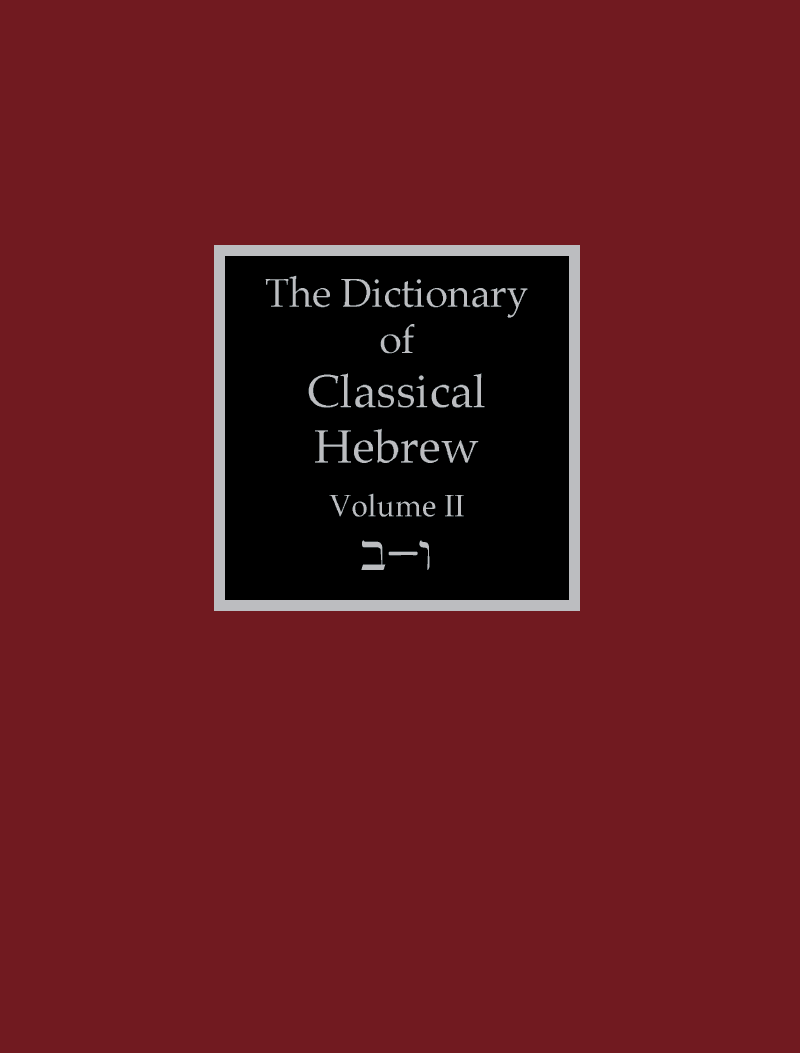

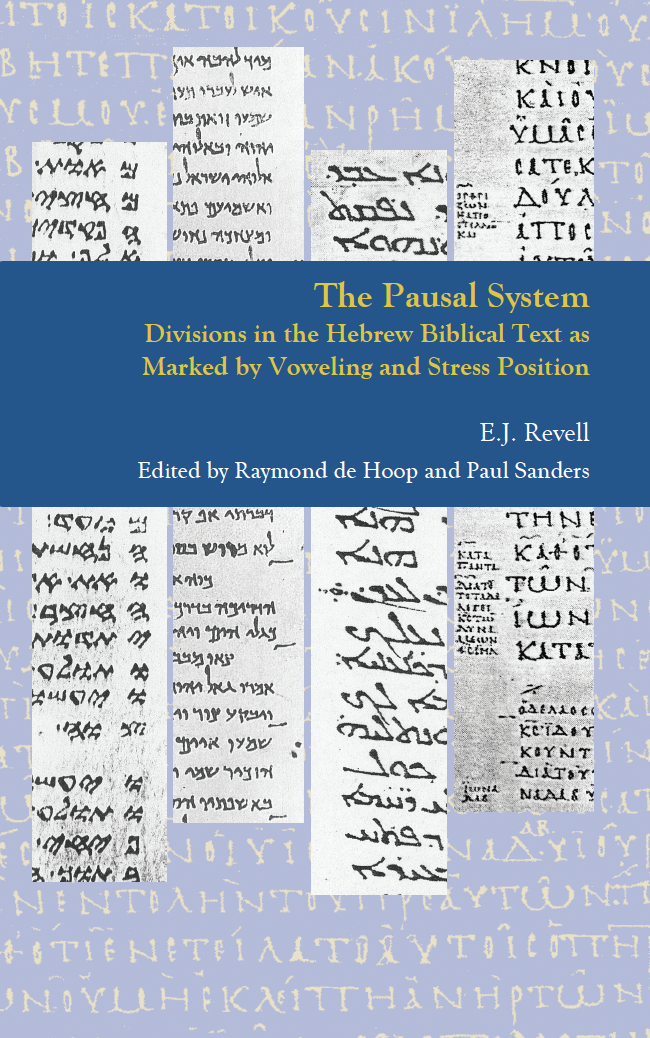
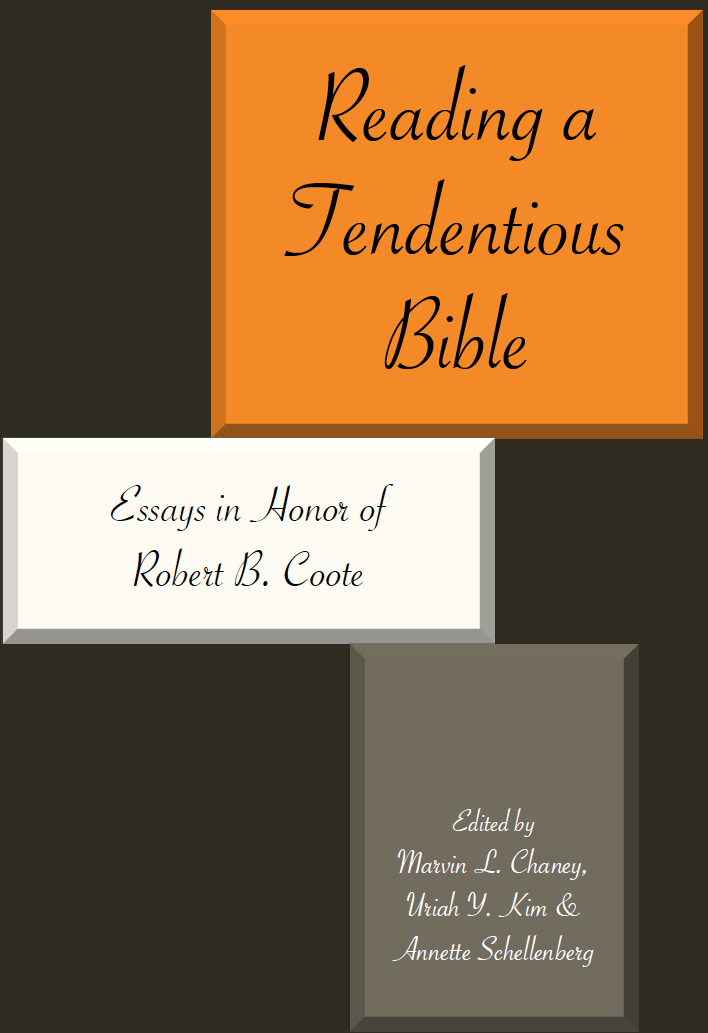
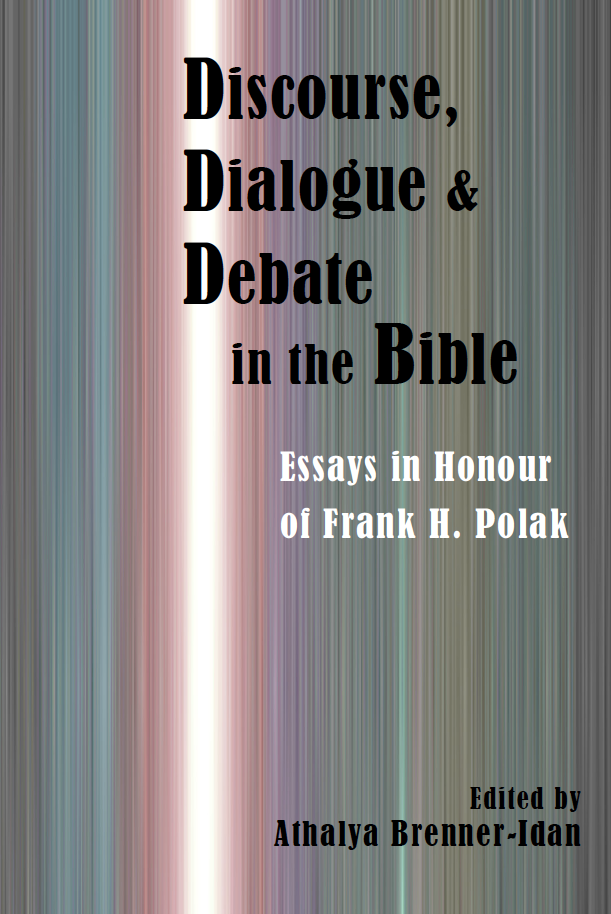
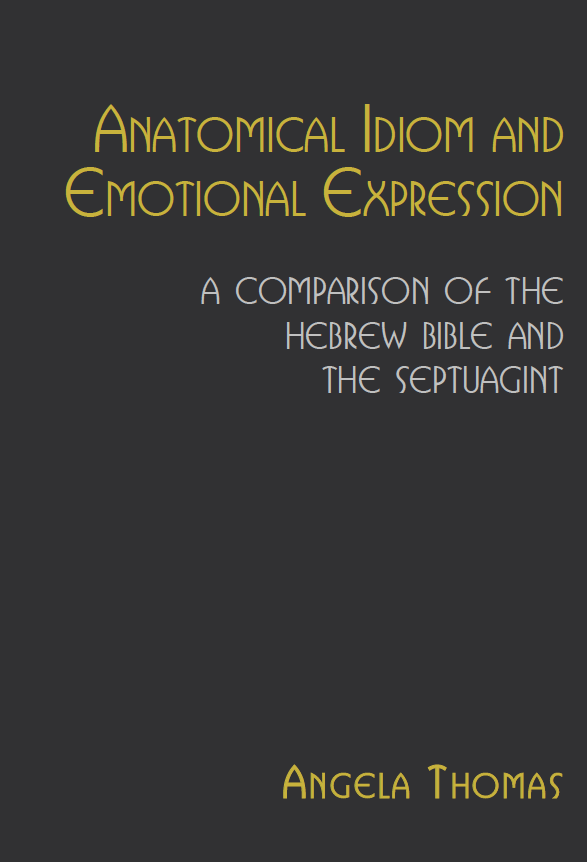
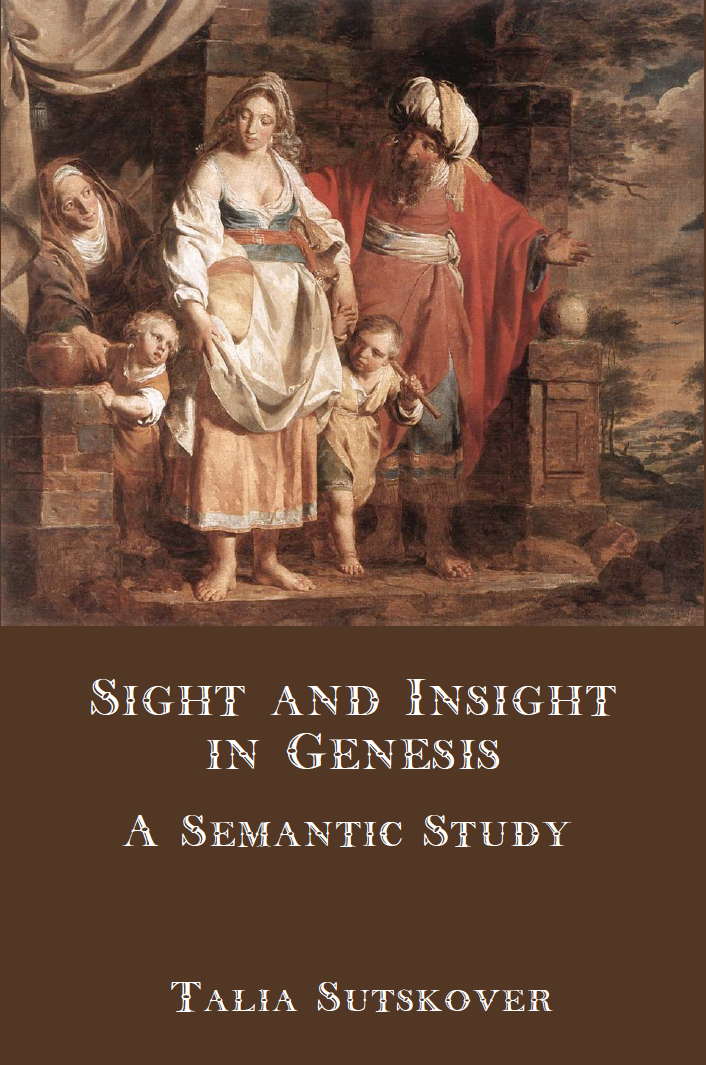
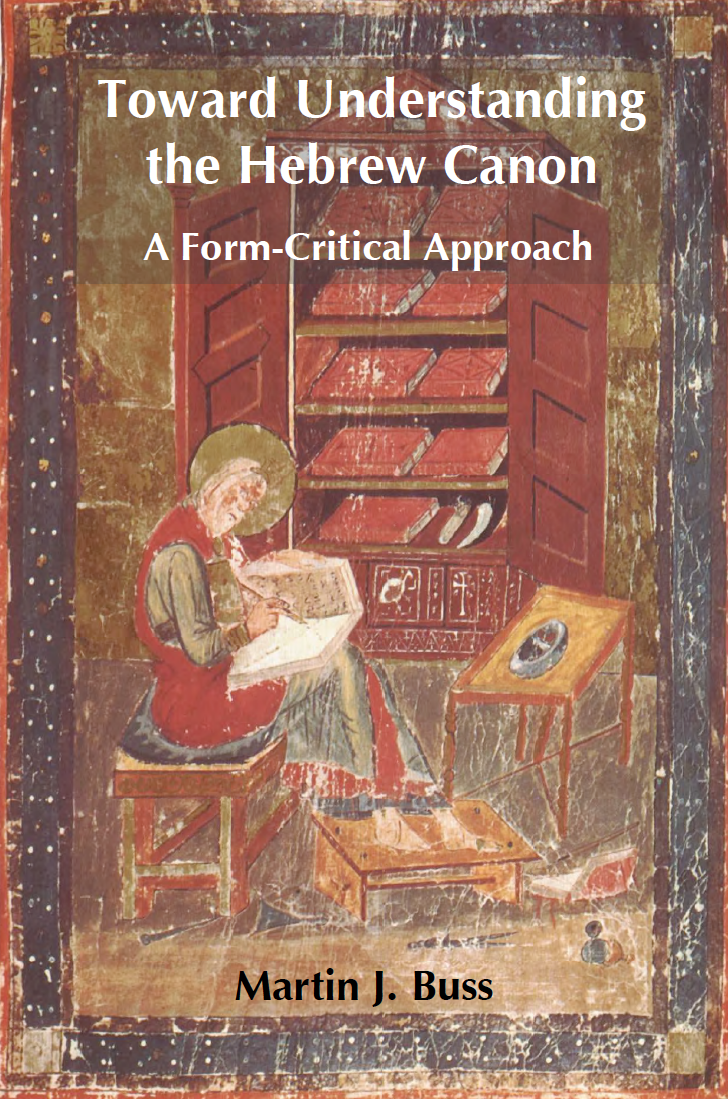
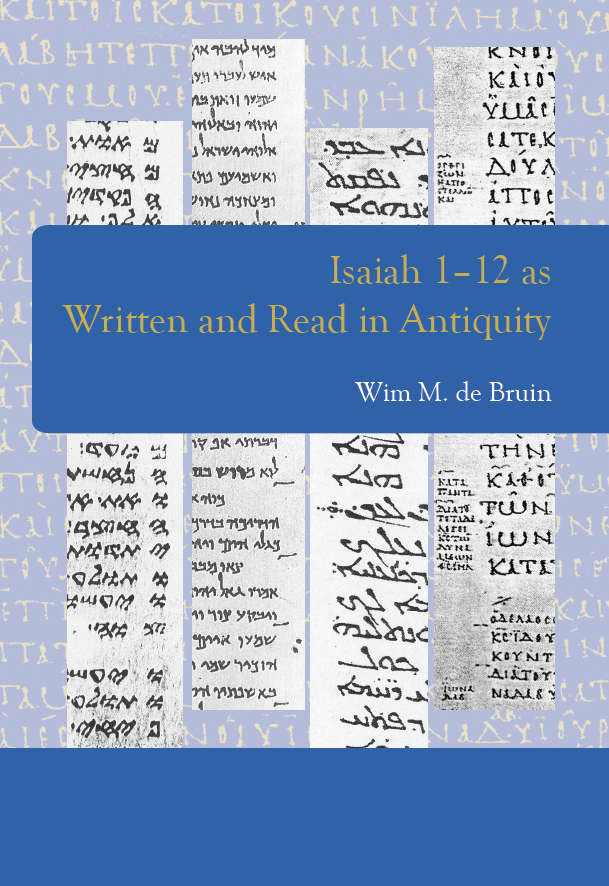
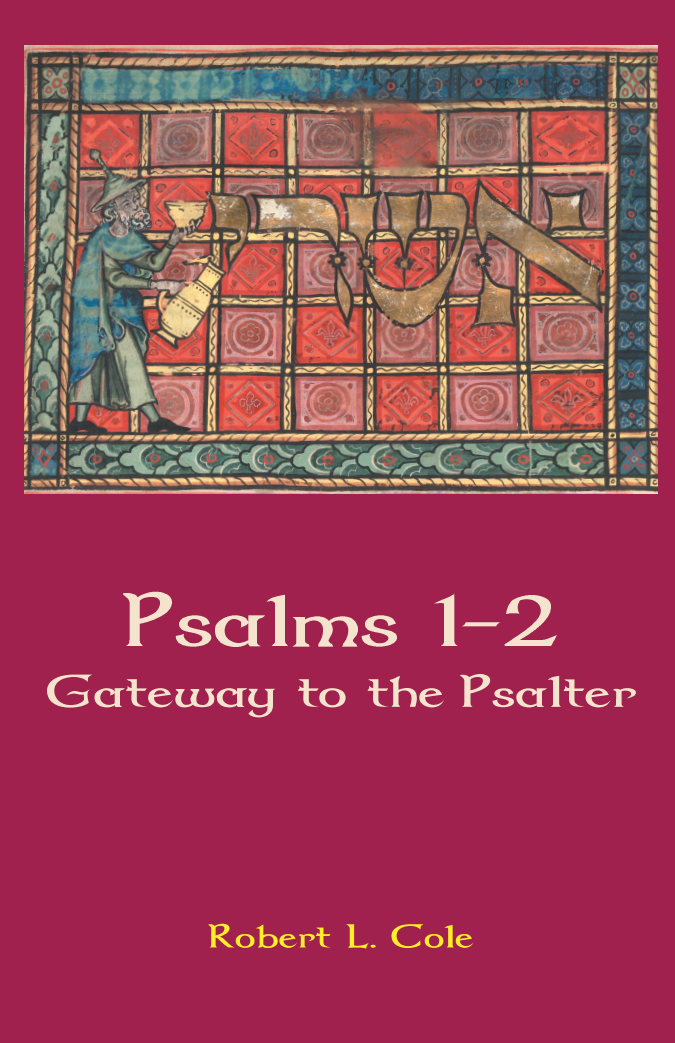
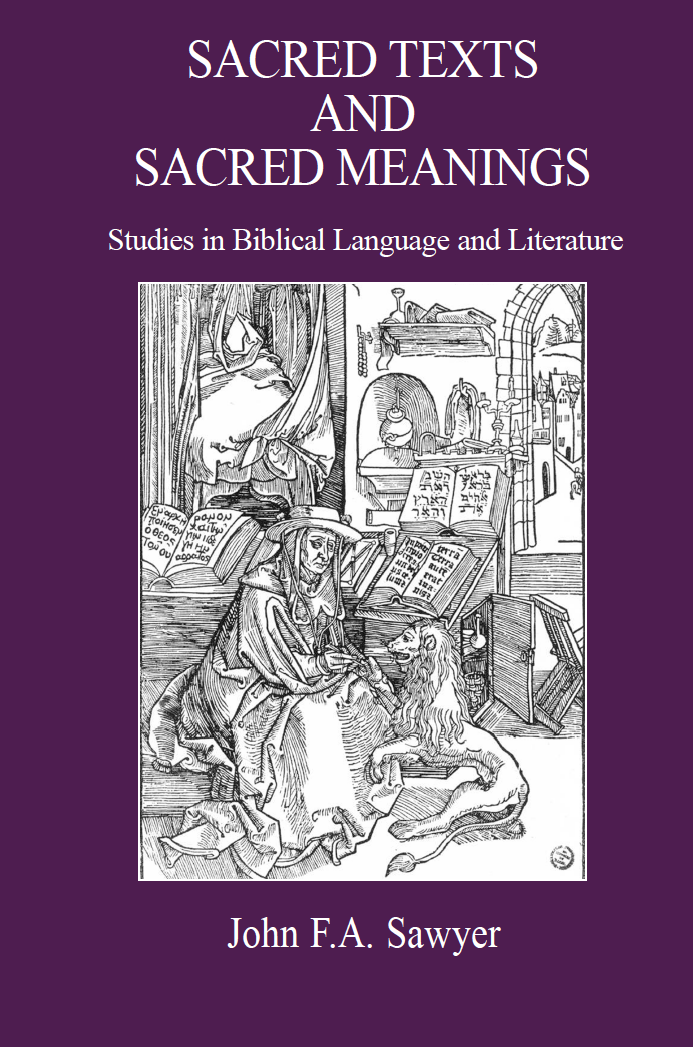


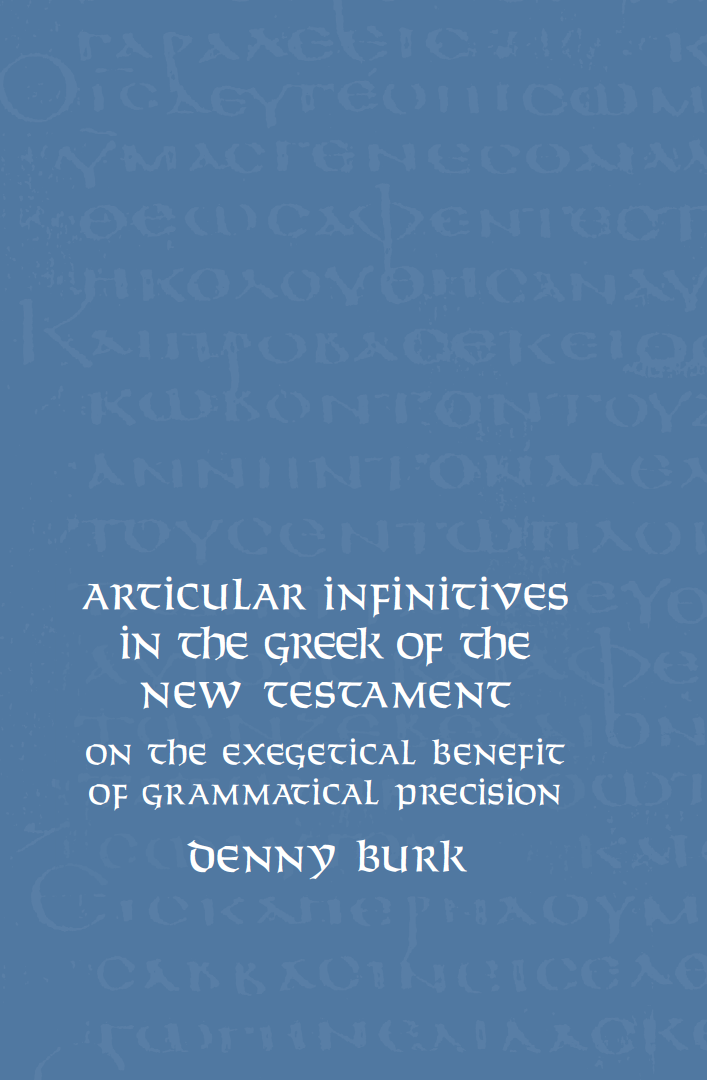

Obadiah
Obadiah